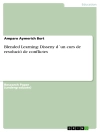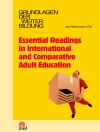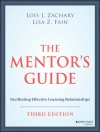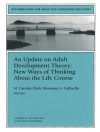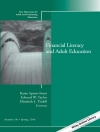This book focuses on socio-cultural issues and the potential of using dioramas in museums to engage various audiences with – and in – contemporary debates and big issues, which society and the natural environment are facing, such as biodiversity loss.
From the early 1900s, with the passage of time and changes in cultural norms in societies, this genre of exhibits evolved in response to the changes in entertainment, expectations and expressed needs of museum visitors. The challenge has always been to provide meaningful, relevant experiences to visitors, and this is still the aim today. Dioramas are also increasingly valued as learning tools. Contributions in this book specifically focus on their educational potential. In practice, dioramas are used by a wide range of educational practitioners to assist learners in developing and understanding specific concepts, such as climate change, evolution or or conservation issues. In this learning process, dioramas not only contribute to scientific understanding and cultural awareness, but also reconnect wide audiences to the natural world and thereby contribute to the well-being of societies.
In the simultaneously published book: “Natural History Dioramas – Traditional Exhibits for Current Educational Themes, Science Educational Aspects’ the editors discuss the history of dioramas and their building and science learning aspects, as well as current developments and their place in the visitor experience.
Зміст
Foreword & Introduction, Scheersoi, Annette & Tunnicliffe, Sue Dale.- Section 1. Reaching Different Types of Audiences through Dioramas.- 1) Leisure Visitors’ Responses to Natural History Dioramas, Gkouskou, Eirini & Tunnicliffe, Sue Dale.- 2) Learning to Teach Newcomer Students Using Dioramas of North America, Macdonald, Maritza, Altman, Roberta & Holmes, Jay.- 3) Neitscher, Window to Nature – Museobil BOX-Dioramas, Eva & Weon Kettenhofen, Hae-Yon.- 4) Rethinking Natural History Dioramas: Bundling the Needs of Neuro-diverse and Neurotypical Visitors, Gabriel, Paul.- 5) The Digital Diorama Project: A New Way of Exploring Dioramas from Outside of the Museum Setting, Annastella Gambini.- Section 2. Problematic Aspects of Dioramas.- 6) Life, Living and Lifelessness in Taxidermy , Meehitiya, Luanne, Sanders, Dawn & Hohenstein, Jill.- 7) Cultural Conflict: The Stories Dioramas Tell and Don’t Tell, Ash, Doris.- 8) Intended and Realised Biological Themes of Dioramas – an International Comparison, Achiam, Marianne & Marandino, Martha.- Section 3. Connecting People with the Natural World through Dioramas.- 9) Promoting People’s Connection with Nature through Natural History Displays, Mc Ghie, Henry.- 10) Receiving the Message, Scheersoi, Annette & Weiser, Lara.- 11) Your Last Chance to See?, Dunmall, Keith.- 12) Teaching and Learning Biodiversity with Dioramas, Marandino, Martha, Achiam, Marianne, Bueno, Juliana & Laurini, Carolina.- Conclusion - The relevance of natural history dioramas for sociocultural issues, Reiss, Michael.
Про автора
Annette Scheersoi is a Professor in Biology Education at the University of Bonn,
Germany. Her doctorate was on museum’s exhibition concepts and the use of different
media for communicating biological knowledge. Since 2005 she is a biology teachertrainer
and researcher, first at Frankfurt University, then at the University of Cologne
and now at Bonn’s university. Her research on biology learning focuses on interest
development in out-of-school learning environments. Annette also develops learning
materials for schools as well as for museums, zoos and botanic gardens.
Sue Dale Tunnicliffe is a Reader in Science Education at UCL Institute of
Education, University College London. She holds a bachelors degree from
Westfield College, University of London in Zoology and trained as a secondary
biology teacher at the university’s Institute of Education. After teaching in
grammar schools for a few years she had children and, wanting to find out more
about how young children learnt science, particularly biology, she entered
primary school teaching and is now interested in pre school learning, as well as
animals as exhibits. She set up and ran a new Primary Science and Design
Technology advisory team for London Borough of Richmond and then became
Head of Education at the Zoological Society of London. She has worked at the
BBC and in a cultural museum. Her doctorate was from King’s College,
London ’Talking about animals: conversations of children in zoos, a museum and
a farm”. She has published widely.


